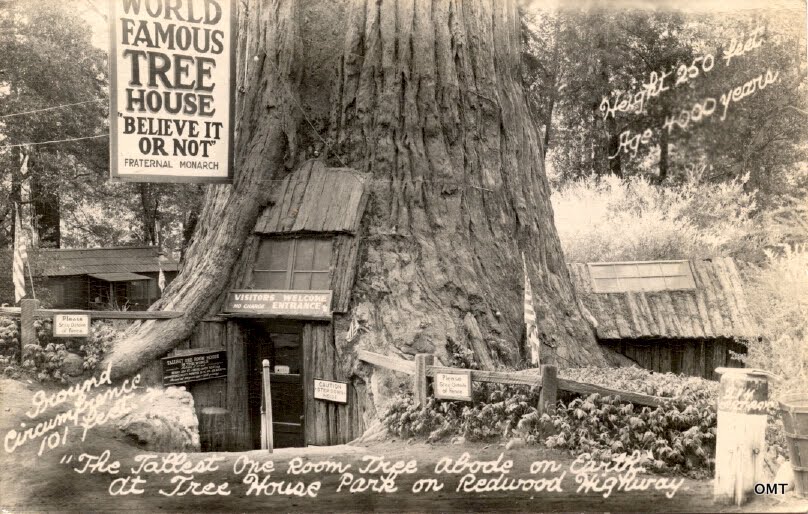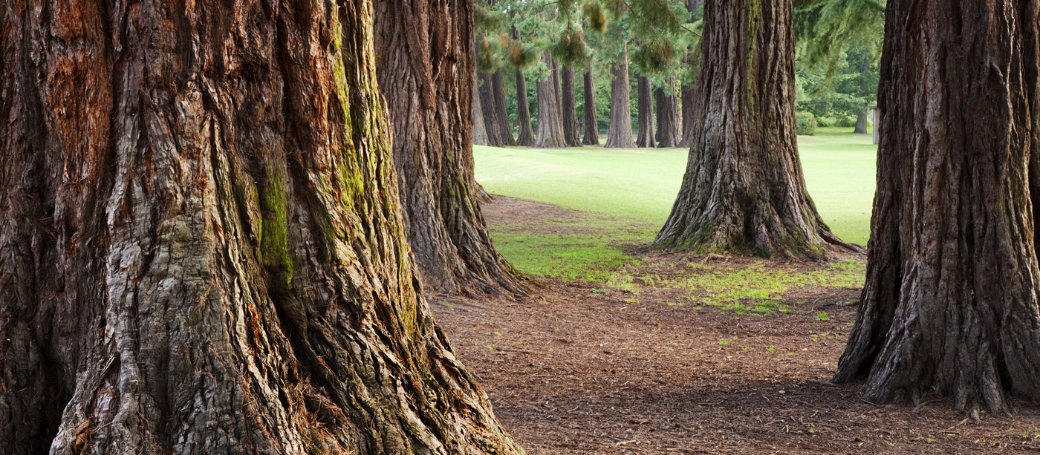This was a tough week for Sequoias. One of the most famous, the Tunnel Tree, fell during a storm. The official name for the tree was the Pioneer Cabin Tree.
The hole through the base of that tree was there long enough to watch humans go from horses to cars, but the tree was more than 1,000 years old. That means it shot through the soil during the middle ages.
For a sequoia, that’s a life cut short by about 2,000 years, as they can pass the 3,000 mark. It helps if we don’t cut tunnels through their bases.
The history of the sequoias stretches back further than our time with them. The progress of humanity bought not just tunnels, but homes made from the steps of logged trees, and finally the spread of sequoias in other parts of the world.
Tunnel Trees

(source: npr.org)
The loss of the Pioneer Cabin Tree means there are no living giant sequoias left with tunnels cut through them. The rest are dead or already felled.
The last giant sequoia with a tunnel that fell was in 1969; the Wawona tree in Yosemite National Park. The are three living coastal redwoods with tunnels cut through them, but those are not the same as sequoias.
While today’s sentiments lean towards not messing with the trees, at one time, citing holes in them inspired travelers. It brought money to the west coast during the late 1800s. If tunnel trees are a crazy idea to you, then Stump homes will blow your mind. We’ll get there.
Felling Giants

(source: pinterest.com)
In the early days of European settlers, they felled thousands of sequoias. The largest concentration of sequoias is in the Sierra Nevada mountain range, in what is now protected park land; Sequoia National Park.
In the 1880’s, however, those big trees spelled big profits to the men who could take them down. The most famous group of people who sacked the sequoias was the Kaweah Colony, a utopian socialist community. They lived in groves near the trees from 1886 to 1892.
They based their economy on logging, specifically sequoias. It was they who named the biggest tree on the planet, what is now known as the General Sherman Tree, except they called it the Karl Marx tree. Their name didn’t stick.
What ended the community was not the registration of the national park. They kept felling trees despite the protections. It was when the Los Angeles courts convicted them of illegal logging.
Stump Homes

(Stump home in a redwood | source: junkshopsnapshots.blogspot.com)
If you have a minute, search for “stump home” images. Most of what you will find is of redwoods, homes made in Washington and elsewhere. There were homes made from the stumps of the great sequoias, but they are tough to find.
What is even harder to find is the stories behind many of them. From a practicality standpoint, the decay of such structures would be fast. While alive, great trees are good at producing natural repellents to pests, but once they die it’s only a matter of time. Trying to pressure treat a massive stump is time-consuming too.
Globe Trotters

(Sequoias in England | source: nationaltrust.org.uk)
The first seeds from the giant sequoias made their way to Europe in the mid-1800s, arriving first in Scotland. Another batch of seeds arrived in England in 1853. Those seeds made into many countries around Europe.
To this day, sequoias grow in Germany, France, Poland, Italy, The Czech Republic and England. They do well in England but struggle in countries where temperatures drop too far below freezing.
In Australia, the Ballarat Botanical Gardens grow a large collection of the giant trees, most around 150 years old.
New Zealand too, has a home for Sequoias. There is something comforting about this; even if parts of the world are ravaged by disaster, the sequoias may live on for a long time in other places.

(source: travelspirit333.com)
A trip to the Sequoia National Park is a bucket list item. It’s not only a study of the living present, trees that are alive right now, living bigger than anything else on this planet, the trip is a trip through history.
Many of the sequoias in the National Forest have been around since Jesus walked the Earth. If you have the chance to study their rings, you can trace them back to prehistoric times. There’s a good chance the Tunnel Tree could be that tree.

